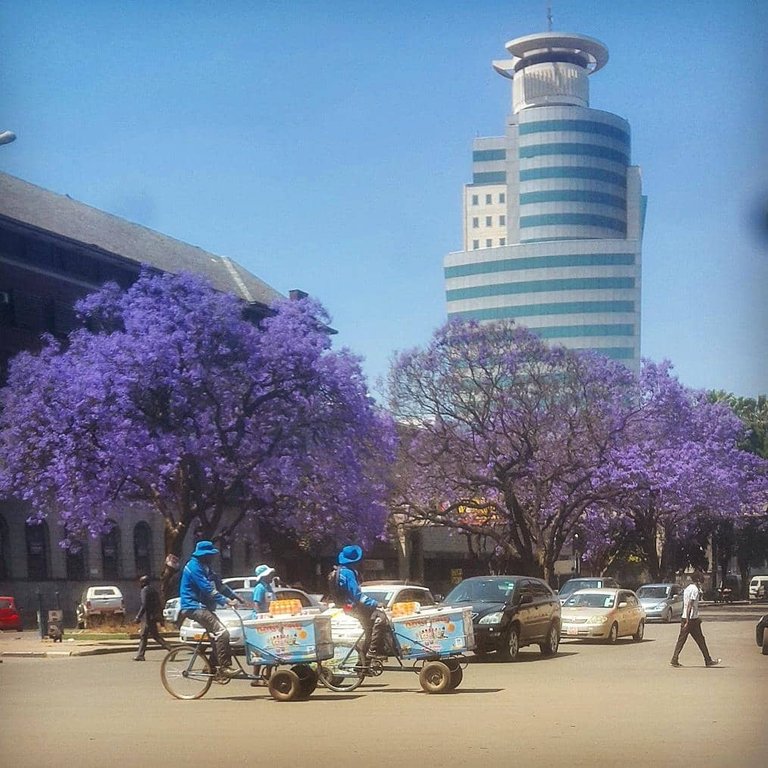Jacaranda trees are found all over Harare and Zimbabwe’s other towns and cities, as well as widely scattered across the countryside. People in Zimbabwe always look forward to the blossom which, apart from simply being pretty, is seen as marking the change of seasons – the end of the dry “winter” and the hope that “summer” rains will bring. Just as cherry blossom is a Japanese icon, so too is jacaranda an icon of Harare. Except jacaranda isn’t Zimbabwean. It’s an invader.

.jpeg)
The Jacaranda is, in fact, a “native” of South America, in particular of Brazil. The story goes that the plant was first introduced to Fort Salisbury – the future Harare – in 1899 by a honeymooning couple who carried home six seedlings from the botanical gardens in Durban, South Africa. Thanks to the power of public works projects in the early twentieth century, jacaranda trees soon took root in Salisbury’s parks, gardens and alongside its expanding road network. One of those places was Cecil Square, named for Cecil Rhodes, whose British South African Company took control of this part of central Africa in the 1890s and laid out in the form of a Union Jack flag. Following the end of white-minority rule and the transformation of Rhodesia to Zimbabwe, many of the colonial place names were changed, with Cecil Square taking the name Africa Unity Square.
Come visit Harare in October and November to enjoy this natural spectacle.
Hi! I am a robot. I just upvoted you! I found similar content that readers might be interested in:
https://theworldelsewhere.com/2014/11/28/brazil-in-zimbabwe-a-note-on-the-blogs-header/
Congratulations @theicoracle! You have completed the following achievement on the Steem blockchain and have been rewarded with new badge(s) :
Click here to view your Board of Honor
If you no longer want to receive notifications, reply to this comment with the word
STOPDo not miss the last post from @steemitboard: